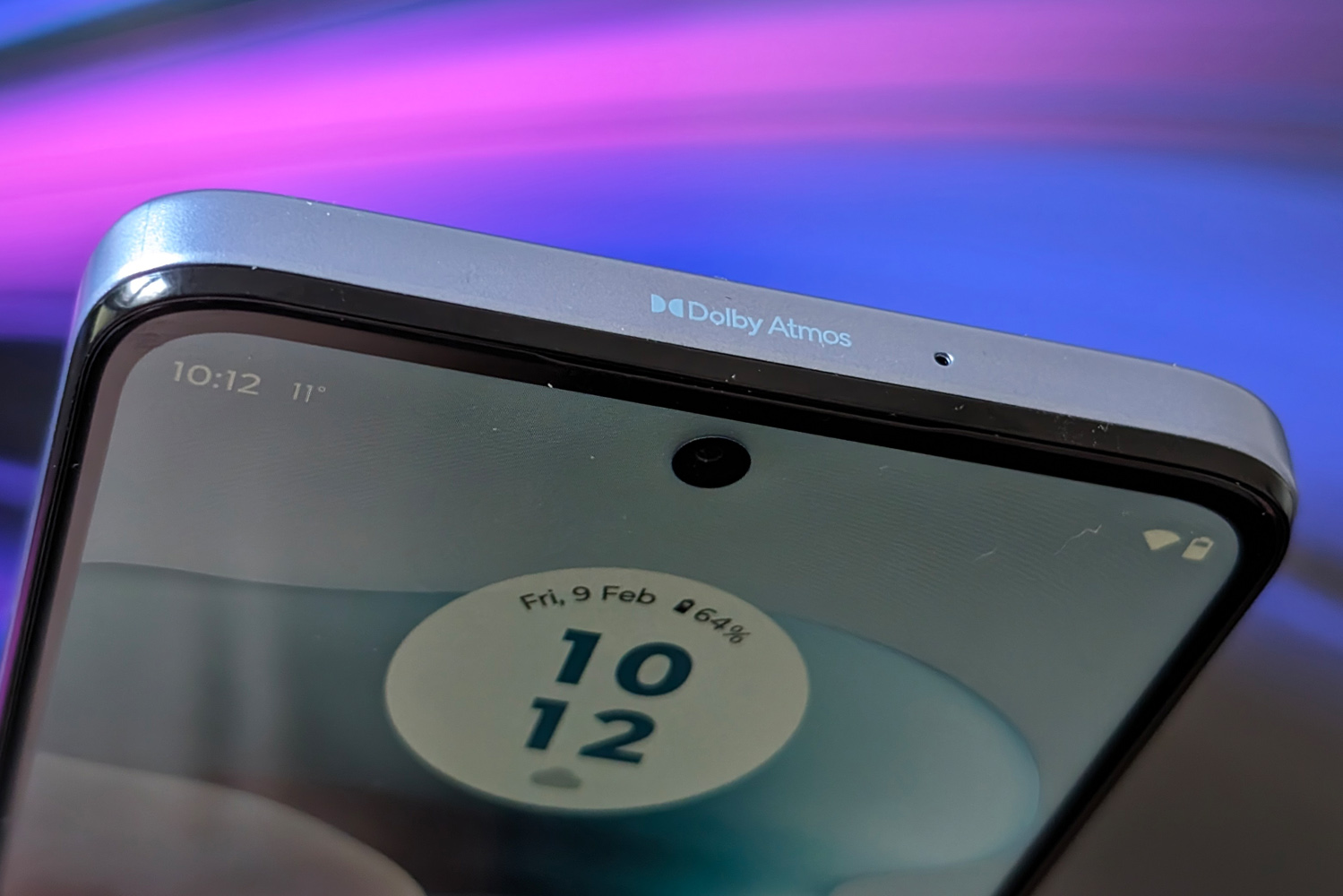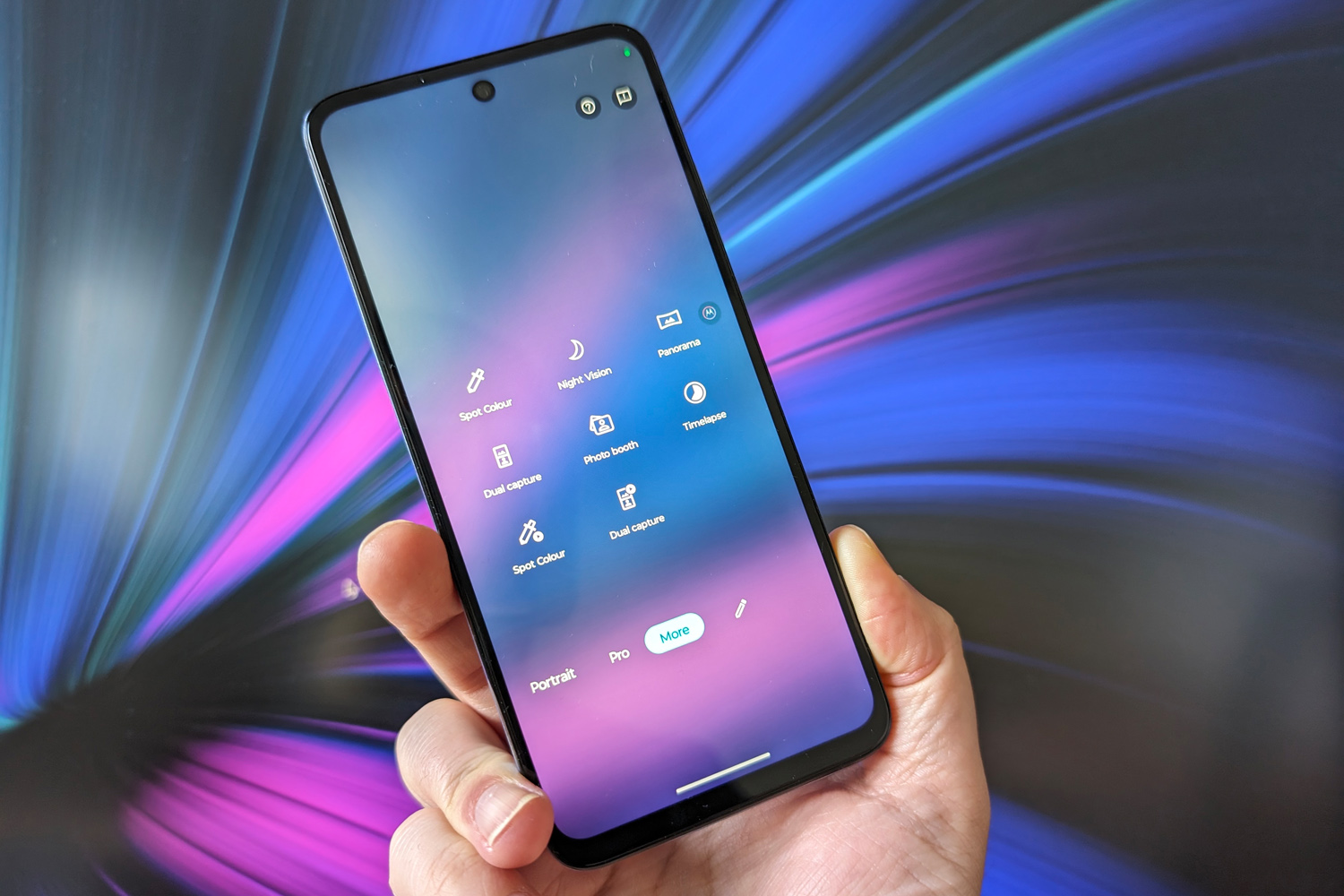Motorola Moto G34 5G review: new starting point?
This might be as affordable as 5G gets

Stuff Verdict
It looks well equipped on paper, and 5G connectivity doesn’t really get any cheaper. It wouldn’t take much extra saving to buy any number of faster rivals, though.
Pros
- Styling is on point
- Decent battery life
- High pixel count main camera
Cons
- So-so performance sometimes frustrates
- Bare minimum update promise
- Macro camera adds no real value
Introduction
Remember when 5G was the exclusive domain of flagship smartphones, and you had to pay over the odds for a compatible cellular plan? That’s not the case in 2024, where networks hand out huge 5G data bundles for next to nothing and even cheap phones are getting in on the action. The Motorola G34 might be the most affordable 5G phone I’ve ever tried, which sounds appealing if you’re on a budget.
You’ll certainly struggle to find specs that can match it for the £150 asking price (there’s no word of a US release). Moto has even managed to include some features usually reserved for phones in the next price bracket up, like a big battery and the latest version of Android.
But when you don’t have to spend a whole lot more to find more storage, more potent processors, or longer software support, does it make more sense to save your cash just that little bit longer? Or is the Motorola G34 5G a true budget bargain? After a few weeks of testing, I’m in two minds.
How we test smartphones
Every phone reviewed on Stuff is used as our main device throughout the testing process. We use industry standard benchmarks and tests, as well as our own years of experience, to judge general performance, battery life, display, sound and camera image quality. Manufacturers have no visibility on reviews before they appear online, and we never accept payment to feature products.
Find out more about how we test and rate products.
Design & build: a light touch



With a flat back, squared-off sides and a front that’s almost entirely screen, the Motorola G34 does a convincing impression of a much pricier phone. It’s only when you get one in your hand you can tell it’s made of polycarbonate plastic, not the glass and metal blend you’ll find on flagships like the Samsung Galaxy S24. It doesn’t feel cheap, though, and weighs a reassuring 181g.
The matte finish on my Ice Blue review unit did a fantastic job of hiding fingerprint muck, and Moto says it has a “water repellent” design. It stops short of providing an official IP rating on its website, though, so we’re talking a light rain shower at best. There’s also Charcoal Black and Ocean Green colours on offer, with the latter having a vegan leather finish for a bit of extra flair.
A fingerprint sensor being baked into the power button is still the norm for inexpensive phones. The G34’s is sensibly placed half-way up the right side of the phone; I could easily reach it with my left index finger or right thumb, depending on which hand I was holding it in. It was very accurate and quick at detecting my digits. Face unlock is a nice alternative, even if it can’t be used for apps that demand biometric security, like banking apps.
The Motorola G34 is a nice reminder of the features we used to take for granted, before flagships decided to ditch them. One of the SIM tray’s two slots can swallow a microSD card, for adding extra storage when you need it, and there’s a 3.5mm headphone port at the bottom edge.
Screen & sound: need for speed



Chunky bezels that are thicker at the bottom than at the top and sides make it clear the Motorola G34 is a budget blower, but at 6.5in the display itself is fairly substantial. The punch-hole selfie cam looks pretty slick, and with the right wallpaper those bezels aren’t at all distracting.
The panel itself is an IPS LCD with a modest 1600×720 resolution. It looks reasonably crisp at arms’ length, with restrained colours and decent enough contrast. Brightness caps out at 500 nits, which can make it tricky to see what’s onscreen in direct sunlight.
It’ll never compete with even the cheapest OLED display, but then it costs half the price. It’s hard to feel especially short-changed, given you’re also getting a 120Hz refresh rate. Most budget phones stretch to 90Hz panels, with only the cheapest handsets sticking to 60Hz.
I appreciated the option to leave the phone to swap between between 60 and 120Hz on the fly, depending on what’s happening onscreen, but preferred to force 120Hz on all the time. Battery power only takes a minor hit, and it helps the phone feel that little bit more responsive – something it very much needs.
Stereo speakers are a welcome addition at this price. It combines the earpiece tweeter with a downfiring main driver for decently loud audio. Dolby Atmos adds a bit of extra separation, but don’t expect anything in the way of bass presence. At least the 3.5mm headphone port made wired listening a breeze.
Cameras: more than pixel count



A 50MP camera sensor on a £150 phone sounds seriously impressive, but don’t get blinded by the numbers. The Motorola G34’s leans lens is merely OK, even at this price. It lacks any kind of image stabilisation, so needs an especially steady hand when snapping at night, and Moto’s image processing sits somewhere towards the middle of the smartphone pecking order.
In perfect light the G34 can still be a bit too aggressive on the sharpening, in an effort to extract the maximum amount of detail. That leaves pics looking a little crunchy at times, especially once you start peeking at pixels. That said, colours are on the right side of realistic, and dynamic range is handled fairly well with a nice amount of contrast. The HDR treatment is also subtle, with a nice mix of highlight and shadow detail. The “AI” colour and exposure processing can sometimes go overboard, though, brightening and warming images that didn’t need it. I preferred the Natural preset, which was closer to reality.













In theory the sensor can crop in for clean 2x zoom shots, but Moto hasn’t included a magnification toggle in the camera app. The app takes a second to open and activate the sensor, and can also be a little sluggish to save low-light snaps. This isn’t unheard of at the budget end of the spectrum, though.
Neither is an exceptionally basic secondary camera. The 2MP macro lens included here can focus from around 4cm, but produces soft, noisy-looking images even in good light. I rarely felt the need to use it, and question whether it truly adds any extra value other than Motorola being able to claim having a dual rear camera system.
This is still an affordable phone, of course, so image quality expectations should be kept firmly in check.
Software experience: more Moto



I was very happy to see the Motorola G34 running Android 14 right out of the box; some budget-minded rivals are still shipping with the previous-gen Android 13. That will keep the phone current for at least the next two years, with Moto promising a single major OS upgrade. I think more expensive handsets with two years of OS updates make more financial sense in the long run, though.
The UI is unchanged from Moto’s previous efforts, which stick very closely to the stock Android experience. Some custom widgets and fonts are the only real stand-outs, with Google’s apps being the default everywhere else. Old favourites like the karate chop gesture to turn on the torch make a return, and there’s a decent amount of customisation on offer.
The Moto Secure privacy hub and Family Space app are useful additions if you’re planning to pass this phone on to a child, while Moto Unplugged is a nice take on Do Not Disturb. It locks down apps to just the ones you choose, muting all other notifications so you can concentrate or relax. There are a bunch of pre-installed games and apps I could’ve done without, but they’re easy enough to remove.
I always thought Motorola’s software light touch worked well on its more affordable phones, not wasting precious CPU resources on flashy animations or filling up the limited storage with bloat. The G34 continues the legacy of the original Moto G in that respect.
Performance & battery life: get what you pay for


The Motorola G34’s Snapdragon 695 chipset has been around for a while now. It was a regular sight in mid-range phones as recently as last year, including the $449/£399 Sony Xperia 10 V. You’re getting the same silicon for less than half the price here. Naturally this is a 5G-ready chip, so you’re good for the fastest mobile data speeds once a compatible SIM card is slotted home.
My review sample, which has 4GB of RAM and 128GB of storage, is indicative of the UK market. There are versions on sale in other territories with more memory and storage. I wonder if 4GB is a bit too meagre, as I’ve used phones with the same CPU that felt far smoother and responsive than this.
There are small stutters when swiping between homescreen pages; menus take a half-second longer to load; apps regularly have to reload when trying to multitask, even with some system storage put aside as virtual memory. More than once I had to check I’d set the screen’s refresh rate to 120Hz, as it felt so juddery. You’ll never forget this is a budget phone.
Simpler, 2D games played reasonably well, but more demanding 3D titles had to stick to their lowest settings for the smoothest frame rates. There’s no way you’ll hit the 120Hz maximum in Call of Duty Mobile, but I did manage to play a few multiplayer matches without any game-breaking slowdown. Fortnite defaults to less than 100% rendering resolution, and I still experienced stutters.
At least the CPU isn’t especially power-hungry, and the 5000mAh battery is easily enough to last an entire day of pretty heavy use. Even over 5G I could leave the house first thing and not worry about a mid-afternoon top-up. When at home and exclusively connected to Wi-Fi, my usual mix of social, web browsing, streaming and Bluetooth music playback would let me stretch comfortably into a second day. 18W wired charging is distinctly average, even for a budget phone.
Motorola Moto g34 verdict

How badly do you want 5G on the cheap? The Motorola G34 will get your mobile data up to speed, with more heroic hardware than the cut-price competition. Similarly-priced rivals tend to be 4G-only affairs, and skip out on 120Hz screens. Daylight camera performance is OK for the money, and while Moto’s update promise is basic, it’s at least in line with the budget competition.
Performance is undeniably entry-level, though, and that secondary macro lens is absolutely a token inclusion. Phones in the next price bracket up should have longer lifespans, with hardware that can better keep pace with Android’s increasingly demanding system requirements and an extra year (or more) of software updates. That makes the Motorola G34 a bit of a false economy, at least in Western markets where the Honor 90 Lite can be had for £30 more, with double the storage and punchier performance.
A Motorola G54 is also only £30 more. It might run Android 13, but has a higher resolution screen, twice as much storage and memory, plus a slightly faster CPU. I think it’s the better pick if you can afford it. The G34 will probably prove more popular in other territories, where even mid-range models can be out of reach of the majority of shoppers.
Stuff Says…
It looks well equipped on paper, and 5G connectivity doesn’t really get any cheaper. It wouldn’t take much extra saving to buy any number of faster rivals, though.
Pros
Styling is on point
Decent battery life
High pixel count main camera
Cons
So-so performance sometimes frustrates
Bare minimum update promise
Macro camera adds no real value
Motorola Moto g34 technical specifications
| Screen | 6.53in, 1600×720 IPS LCD w/ 120Hz |
| CPU | Qualcomm Snapdragon 695 |
| Memory | 4/8GB |
| Cameras | 50MP, f/1.8 w/ PDAF + 2MP, f/2.4 macro rear 16MP, f/2.4 front |
| Storage | 64/128/256GB |
| Operating system | Android 14 |
| Battery | 5000mAh w/ 18W wired charging |
| Dimensions | 163x75x8mm, 179g |
